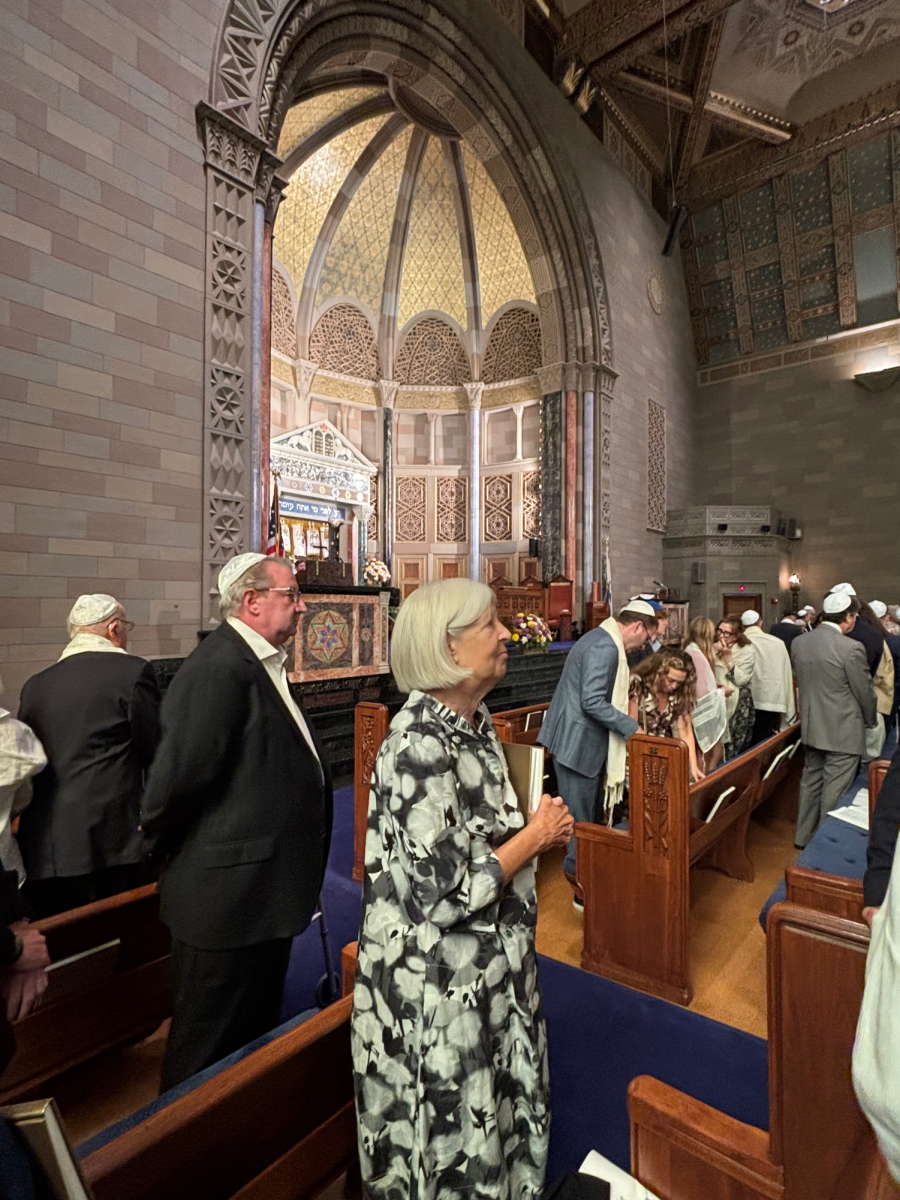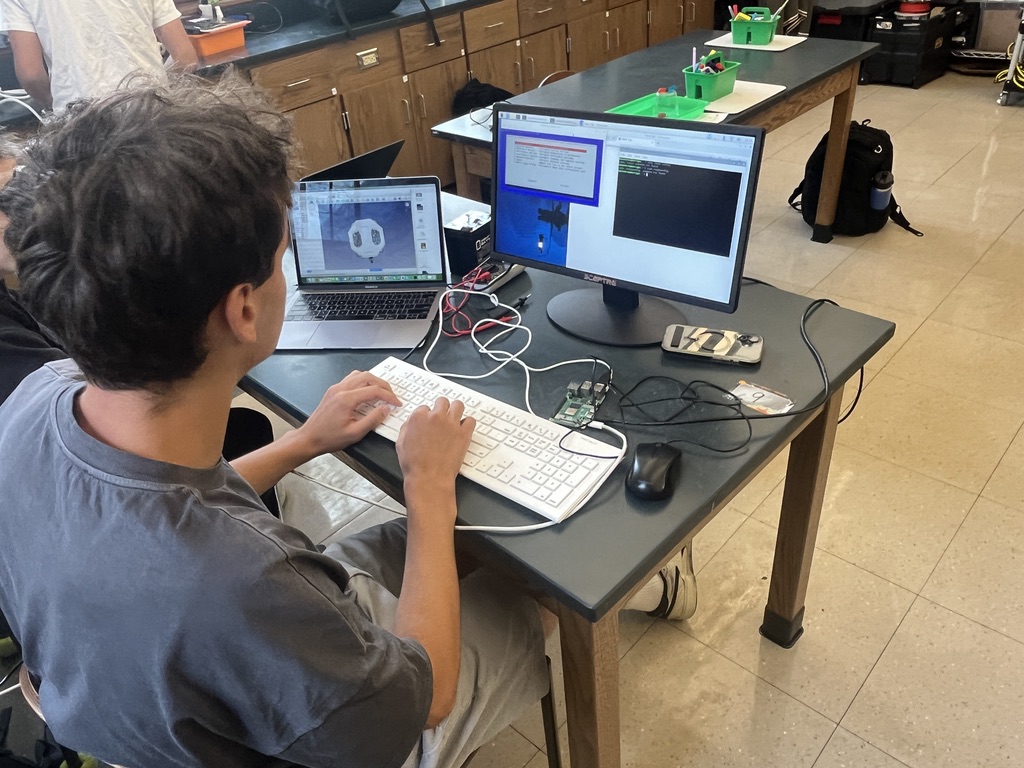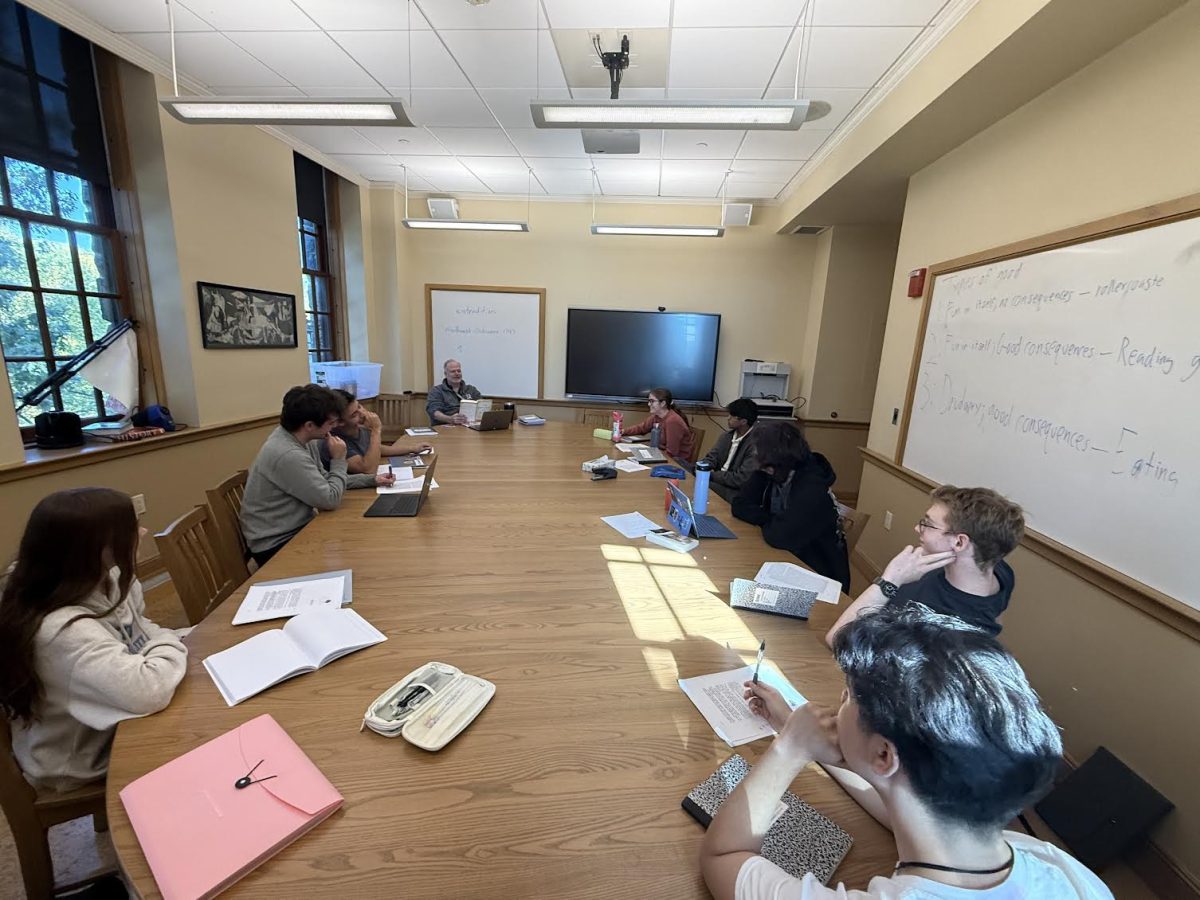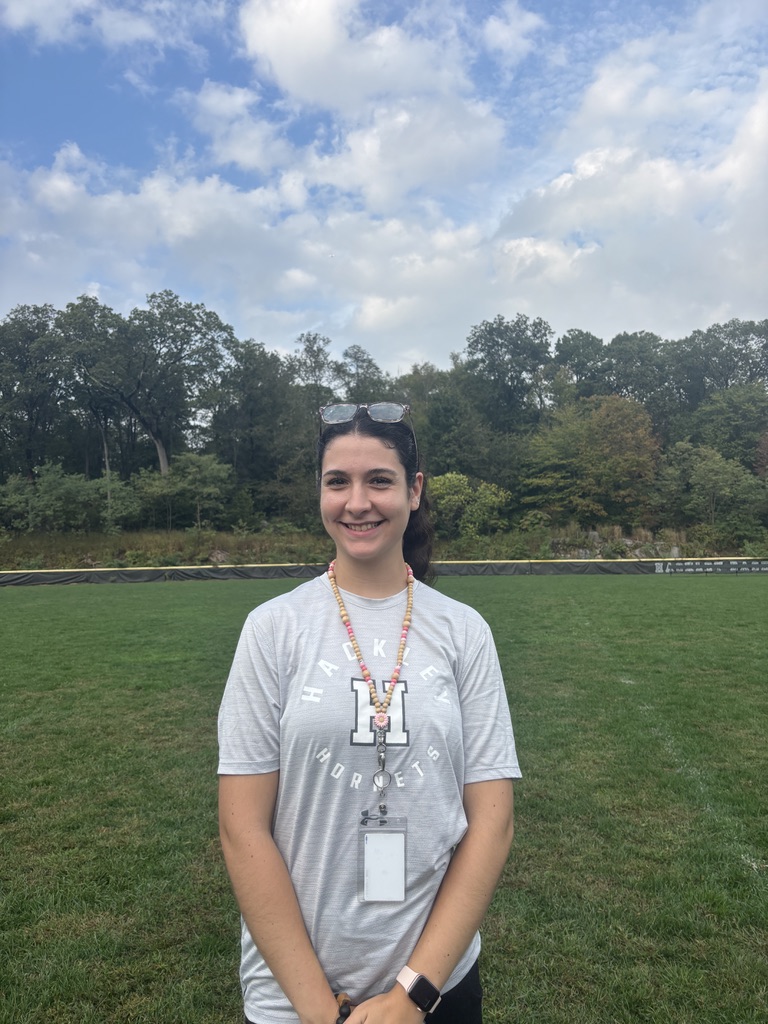“Hackley is late to the security party,” according to Robert Aldrich, Director of Operations and Campus Planning.
Hackley’s historically “open” campus has been proven to err on the side of being more relaxed. So, to rectify that, Hackley rang in the New Year by changing its security procedures this January.
The first major change is that all visitors, including parents and guest speakers, are now required to check in at specific locations on campus.
At these check-in locations, they will receive a visitor lanyard so that they can be identified on campus as such. There are seven different check-in offices on campus in the following places: admissions, the front entrance (near the “Enter here to find a friend” sign), the Upper School office, the Middle School office, the Lower School, and one at each of the doors in the Johnson Center. This system will give Hackley a better sense of who is coming in and out of Hackley.
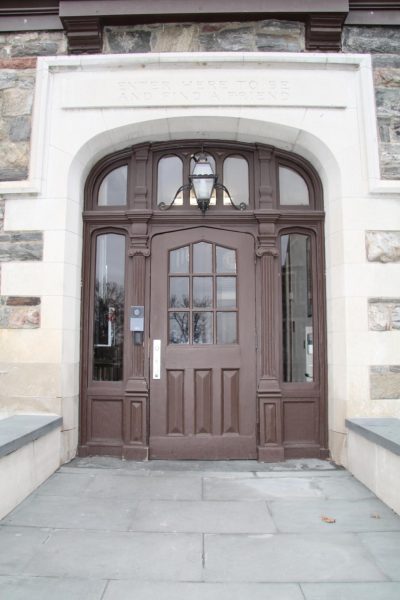
A central security check-in spot is the “Enter here to find a friend door” on the Quad. There are several check-in spots across campus so it is easy for visitors to enter the academic buildings. Visitors must check in so that Hackley is aware of who is on campus.
The biggest change regarding everyday life for students and faculty is that all of the outside doors at Hackley will be locked. Students and faculty have recently been issued key cards that will allow them to unlock each door.
The changes come as a result of a process that began last summer when Hackley hired a security consulting group, Altaris Consulting Group, to conduct a comprehensive safety and security assessment of the school’s campus and Hackley’s policies and training.
Altaris Consulting Group gave many recommendations, one of which was wearing lanyards around the school. Each member of the Hackley community will be required to wear their key card ID on a lanyard around campus. Hackley members will have different colored lanyards depending on their role so that they can be more easily identified. Employees have black lanyards, students have gray lanyards, admissions visitors are yellow, general visitors are green, parents/families are blue, and vendors or contractors are red.
Due to the layout of Hackley’s campus, it is not feasible to have a gate at the entrance to campus, so the check-in points, locking the doors, and wearing lanyards are the next best thing. Student’s key cards are programmed to work Monday through Friday from 7:00 a.m. to 7:00 p.m.
The lanyards and the locking of the doors will have the most significant cultural impact on students. However, there are other security changes that Hackley will be making in the future as well.
One of the changes is the drill requirements. In the next few years, Hackley will conduct more drills. The state is increasing the number of required fire drills and lockdown drills the school must have per year. Additionally, all the drills now happen at convenient times, such as during the last five minutes of a class. Now, the state is requiring the school to do a “messy drill” to better replicate the chaos of a real emergency. This means the drill will occur during lunch or between classes when everybody is in the hall or more dispersed across campus.
There will also be many new training requirements for faculty and staff to supplement the training that began last August. There will be more training each year during the meetings before students return to school.
Furthermore, many changes will occur behind the scenes. For example, Hackley has had to make changes to their crisis plan by having to write new chapters.
Mr. Aldrich recognizes that it will take time for people to get used to the new ID system and acknowledges that, without a doubt, people will lose their ID. If students lose their ID, they are to visit their division office, and the IT department will make a new one. However, it may take a few days for the student to receive their new ID.
Mr. Aldrich also addressed the possibility of students not wearing their lanyards. He said that there would not be a huge disciplinary consequence right away if students were not wearing their lanyards. He recognized that this is a cultural shift and one that will take time for Hackley members to get used to.
“I hope students will realize that this is in the interest of safety, and that’s an easy incentive as to why people should adhere to the new policy,” said Mr. Aldrich.
Mr. Aldrich said that on day one, not everyone will have their lanyard on their neck, but he hopes a lot more people will by next October.
“This is not like sweatpants. We understand that this is a big change,” Mr. Aldrich said.
Students have mixed opinions on the new security procedures. Some students have complained about how locking the doors is inconvenient, while other students understand that these new procedures are necessary to ensure full safety for our school.
“Before, anyone could have walked into the building and people did,” said senior Mak Sabwami. Mak remarked how, before, many people would walk into the senior lounge looking lost, and this could have been anyone, including people who could be a threat to the school.
Freshman Brian Feehan does not mind the new security procedures. “If it helps keep the campus safe, it is fine by me,” he said.
Junior Bella Barriera lamented about the time restraints on the key cards. “It is annoying that they stop working to open the doors by 7:00 p.m. If we have an away game and do not get back to school till later it would be annoying to not be able to get our bags from the Johnson Center,” she said.
Phoebe Abrahms has mixed views on the changes. “I think that having to wear the lanyards is unnecessary as being able to show your key card to someone should be enough to show your identity if there were any issues,” she said. However, Phoebe recognized that locking the doors and having key cards is a “necessary inconvenience.”




